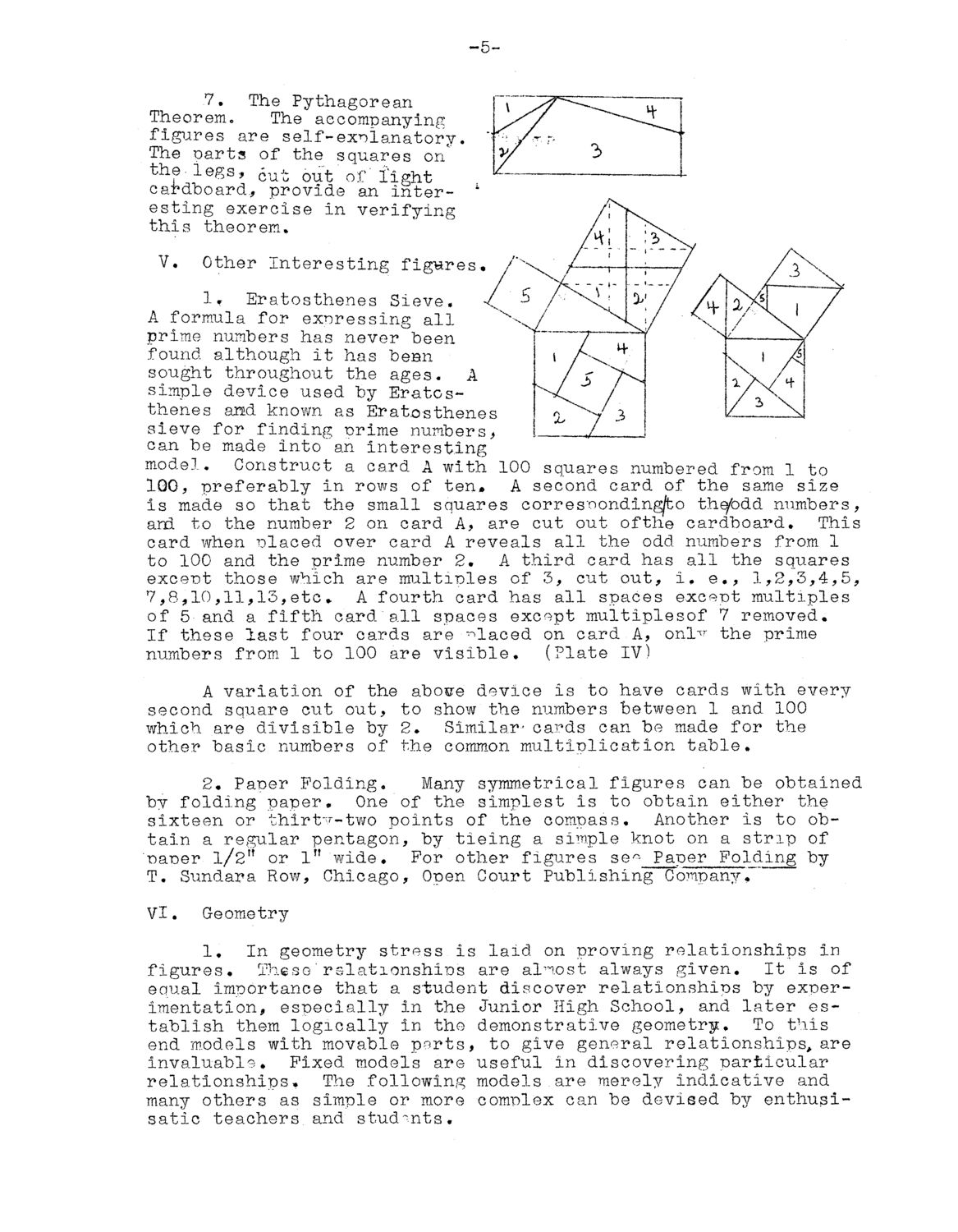| |
| |
Caption: Mathematical Models Construction and Use of Mathematical Models (Fehr & Hildebrandt)
This is a reduced-resolution page image for fast online browsing.

EXTRACTED TEXT FROM PAGE:
-5- 7. The Pythagorean Theorem. The accompanying figures are self-explanatory. The parts of the squares on" the•1egs, cut out of' light cardboard., provide an inter- * esting exercise in verifying this theorem* V* Other Interesting figures lf Eratosthenes Sieve, A formula for expressing all prime numbers has never been "found although it has bean sought throughout the ages. A simple device used by Eratosthenes arad known as Eratosthenes sieve for finding prime numbers, can be made into"an interesting model. Construct a card A with 100 squares numbered from 1 to 1Q0, preferably in rows of ten* A second card of the same size is made so that the small squares corresponding^ thqfodd numbers, and to the number 2 on card A, are cut out of the cardboard* This card when placed over card A reveals all the odd numbers from 1 to 100 and the prime number 2. A third card has all the squares except those which are multiples of 3, cut out, i. e., 1,2,3,4,5, 7,8,10,11,13,etc* A fourth card has all spaces except multiples of 5 and a fifth card"all spaces except multiplesof 7 removed. If these last four cards are Placed on card A, onl^ the prime numbers from 1 to 100 are visible. (Plate IV) A variation of the abosre second square cut out, which are divisible by other basic numbers of device is to have cards with every to show the numbers between 1 and 100 2» Similar' cards can be made for the the common multiplication table. 2. Paper Folding. Many symmetrical figures can be obtained by folding paper. One of the simplest is to obtain either the sixteen or thirtv-two points of the compass. Another is to obtain a regular pentagon, by tieing a simple knot on a strip of paper l/2tf or 1" wide. For other figures se^ Paper Folding by T. Sundara Row, Chicago, Open Court Publishing Company. ~ ~ VI. Geometry s laid on proving relationships In 1. In geometry stress i figures. Th§se'relationships are almost always given. It is of equal importance that a stude nt discover relationships by experimentation, especially In the Junior High School, and later es~ tablish them logically in the demonstrative geometry. To this end models with movable parts , to give general relationships, are invaluable. Fixed models are useful 'in discovering particular relationships. The following models are merely indicative and many others as simple or more complex can be devised by enthusisatic teachers and students.
| |